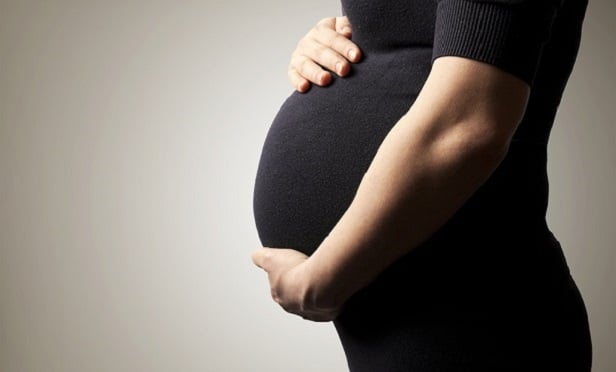
Editor's note: Be sure to read the other articles in this series:
- Consolidated Appropriations Act deep dive: Impact on Families First Coronavirus Relief Act's paid leave provisions
- Consolidated Appropriations Act deep dive: Health and dependent care flexible spending accounts
When the Consolidated Appropriations Act of 2021 (CAA) became law on December 27, 2020, it gave new life to two programs that have provided economic relief to American businesses from the early days of the pandemic: the Paycheck Protection Program and the Employee Retention Tax Credit. The new economic stimulus measure expands and improves upon these programs, which are helping companies continue to employ and pay their employees through the economic downturn, including by offsetting employee benefit costs.
Paycheck Protection Program
The Paycheck Protection Program (PPP) helps small and mid-sized businesses keep their workers insured and on the payroll by offering low-interest and largely forgivable loans. The Coronavirus Aid, Relief, and Economic Security Act (CARES Act), enacted in March of 2020, created the PPP. After the initial PPP funding ran out within days of the program's launch, Congress appropriated more PPP funds this past June. The program expired before this second round of funding was exhausted.
Recommended For You
The CAA reauthorizes the program and provides $284 billion additional dollars in funding for new PPP loans and a second funding opportunity for qualified existing PPP loan recipients. The Department of Treasury and the Small Business Administration (SBA) began accepting new PPP loan applications through community banks on January 11, 2021. Qualified existing loan recipients became able to apply for "second draw" loans through those banks on January 13, 2021. Other financial institutions began to accept new and "second draw" PPP applications by January 18, 2021.
Second draw opportunity
To be eligible for a "second-draw loan," a business must have:
- 300 or fewer employees;
- Used the full amount of their first PPP loan on forgivable expenses on or before the expected disbursement date for the second PPP loan; and
- Experienced a revenue reduction of 25% or more in gross receipts in any 2020 quarter compared to the same quarter in 2019.
For this purpose, "gross receipts" includes all revenue in whatever form received or accrued (following the entity's accounting method) from whatever source, including from the sales of products or services, interest, dividends, rents, royalties, fees, or commissions, reduced by returns and allowances. As long as it's forgiven, the value of a borrower's initial PPP loan does not count towards this gross receipt's calculation. Notably, for ease of administration, borrowers may show they have met the reduction in gross receipts standards by showing the reduction on their 2020 tax returns relative to 2019. This provision avoids the need to break out the analysis by quarter.
For both new and "second-draw" borrowers, the CAA keeps most of the existing PPP framework but enhances it. Borrowers will still need to spend at least 60% of their loan amount on payroll expenses to qualify for full forgiveness. All of the new law's changes to loan applications, forgiveness criteria, and forgiveness applications apply to both new PPP applicants and borrowers dating back to the program's origination in the spring of 2020.
Borrowing limits and requirements
Another way the CAA expands the PPP is by making some modifications to borrowing requirements. In general, both new and second-time borrowers have a borrowing limit of up to 2.5 times their average monthly payroll costs (with the caveat that annualized salaries are capped at $100,000 per year). However, unlike earlier iterations of PPP loans, now the borrower may use a payroll cost average from 2019, 2020, or the year before the loan.
The 2.5 times average monthly payroll cost standard also applies to second-draw loans. However, for the second loan, if the borrower has a NAICS code that starts with a 72 (hotel and restaurant industries), they can receive up to 3.5 times their average monthly payroll costs.
The total loan for first-time borrowers remains capped at $10 million, and there is a limit of $2 million for second-draw borrowers. All qualified applicants will need to submit qualified payroll amount documentation, just as they have in the past.
Under the new law, PPP eligibility criteria establishing small business status remains largely the same, but there are a few new controls on borrowers. The CAA excludes publicly traded companies and businesses controlled directly or indirectly by the president of the United States, the vice president, heads of federal executive departments, and members of Congress (as well as any spouses of such federal officials) from PPP eligibility.
Expansion of forgiveness provisions
The CAA maintains all of the existing PPP loan forgiveness standards. Under these criteria, both salaries and "payment for the provision of employee benefits consisting of group health care coverage, including insurance premiums, and retirement" are generally deemed to be forgivable expenses. The other "old rule" forgivable expenses include rent, covered mortgage interest, transportation costs, and utilities. The CAA adds the following to the list of forgivable loan expenses:
- Qualified operating expenditures—payments for business software or cloud computing services that facilitate business operations, product or service delivery, the processing, payment, or tracking of payroll expenses, human resources, sales and billing functions, or accounting or monitoring of supplies, inventory, records, and expenses.
- Covered property damage costs—costs related to property damage caused by vandalism during 2020 disturbances that are not covered by insurance or other funds.
- Covered supplier costs—amounts paid to suppliers under contracts that existed before the "covered period" for goods essential to operations when they make the payment.
- Covered worker protection expenditures—worker protection and facility modification costs needed to comply with federal COVID-19 health and safety guidelines.
Notably, these new forgiveness categories can apply to "old" PPP loans that have not yet been forgiven.
Another change is that borrowers can now select their forgiveness period, as long as it is at least eight weeks long and not greater than 24 weeks. Previously, borrowers needed to choose between either an 8-week or 24-week covered period.
Fast-track rule for smaller loans
Finally, the new law simplifies the forgiveness process for all PPP borrowers whose loans total less than $150,000. Moving forward, these borrowers will be able to use a one-page application that includes their total loan amount, a description of the number of employees the borrower could employ or retain due to the loan, and an estimated total amount spent on payroll costs. Although small businesses will need to keep their expense and payroll documentation on hand for four years, they will not need more information in the case of an SBA audit. The SBA will make the simplified forgiveness application for small borrowers available by January 20, 2021.
Employee retention tax credit
Like the higher-profile Paycheck Protection Program, the CARES Act created the employee retention tax credit to help qualified businesses pay wages and insurance costs during the COVID-19 pandemic. The CAA extends the employee retention tax credit for eligible businesses through June 30, 2021, and improves upon it.
Initially, the retention credit was a refundable payroll tax credit for 50% of qualified wages of up to $10,000 per employee. It applied to wages paid after March 12, 2020, and before January 1, 2021. That meant the maximum credit a business could claim was $5,000 per employee. Also, during 2020, if a business took advantage of the PPP program, then they could not also claim the retention credit. As such, many companies chose to use the PPP instead.
The CAA removes the restriction on prior PPP borrowers from accessing the employee retention credit if they meet the other eligibility criteria (although they cannot use both programs for the same expenses). It also dramatically increases the value of the credit, making the program much more appealing. Now employers can claim 70% of qualified wages up to $10,000 per employee per quarter, rather than 50% and up to $10,000 for the year. Put another way, an employer using the program now can get a payroll tax credit of up to $14,000 per employee for the period from January 1 to June 30.
The new law also slightly expands what can be considered qualified wages for tax credit purposes. Wages always included the amount an employer paid to provide and maintain a group health plan for the employee, but only to the extent that these amounts are excluded from the employees' gross income. The CAA clarifies that a business can claim group health plan costs even if they do not pay any wages to an employee, thereby allowing a company to use the money to pay for a furloughed employee's health plan costs. The new law also allows a business to use the retention credit to offset the cost of bonuses, which can help incentivize essential workers during these times.
Unlike the PPP loans, qualified businesses of all sizes may access the retention tax credit. The qualification standard for the employee retention credit comes from the economic impact the pandemic is having on the business. At first, a company needed to either have their operations wholly or partially suspended by government order due to COVID-19 or demonstrate that gross receipts were below 50% of the comparable quarter in 2019 to qualify. The CAA expands eligibility by lowering the necessary gross receipts decline from 50% to 20% and allowing eligibility based on the prior quarter's gross receipts. If a business was not in existence during all of 2019, they may use the equivalent quarter of 2020 for comparative purposes.
When the retention credit first started, the only types of business entities that did not qualify were:
- State and local governments and any agency or instrumentality of those governments;
- Self-employed individuals, concerning their self-employment earnings;
- Household employers; and
- Any company that got a CARES Act Small Business Administration loan, unless the business applied for and then fully repaid a PPP loan on or before May 14, 2020.
However, now the CAA relaxes the standard for state and local governments' instrumentalities to allow affiliated colleges and universities and entities that primarily provide hospital or medical care to access retention tax credits. As stated before, the new law also permits employers who received a PPP loan to claim the retention tax credit moving forward if they meet the other qualification criteria. The stipulation for these businesses is they cannot claim the retention credit for any wages they paid out previously using forgiven PPP proceeds. This standard is similar to an existing provision that prevents employers claiming a paid leave tax credit from getting a retention tax credit for those wages, too. However, a business can claim a retention credit alongside paid leave tax credits, as long as they do not double-dip.
Finally, while the retention credit is available to businesses of all sizes, the CARES Act did include some provisions that made it more appealing to smaller employers; the CAA expands on this relief. Originally, companies with less than 100 employees could use the credit for any employee. Companies with 100 or more employees could only claim it for employees who did not provide any services (such as furloughed employees). The new law changes this threshold to allow businesses with less than 500 employees to claim the employee retention credit for any employee, regardless if they are working or not. It also allows companies with 500 or fewer employees to advance the credit against their payroll taxes at any point during the quarter based on wages paid in the same quarter in a previous year. When counting employees for retention tax credit purposes, a business needs to use the controlled group standard, rather than counting on a per-entity basis. So, for example, ten companies with separate EINs and 25 employees each that are all owned by the same entity count as one business with 250 employees for the purpose of the employee retention tax credit.
Moving forward
The Treasury Department and the Small Business Administration are beginning to release rules and sub-regulatory guidance to implement the PPP and employee retention tax credit changes. We expect even more guidance to follow to address questions that employers and benefit advisors might have about applying for the new loans and accessing the enhanced credit's benefits.
Discover the latest 2021 annual resources for benefits professionals at the NU Resource Center. BenefitsPRO readers save 10% with code BP10.
Jennifer Berman is CEO, MZQ Consulting and senior vice president of compliance at Kelly Benefit Strategies. She is an employee benefits attorney who has a long history of helping businesses and brokers create innovative and compliant employee benefit plan solutions.
Jessica Waltman is senior compliance consultant at MZQ Consulting. She is a recovering health policy lobbyist who has shaped state and federal laws related to health insurance, employee benefits, and benefit brokers for over two decades.
© 2025 ALM Global, LLC, All Rights Reserved. Request academic re-use from www.copyright.com. All other uses, submit a request to [email protected]. For more information visit Asset & Logo Licensing.







